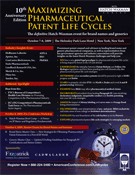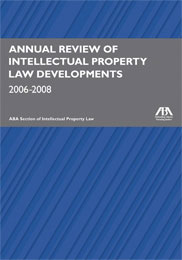The Obama Administration sent out a warning shot that seven years is enough time to protect brand-name biotechnology medicines from generic competitors. In a letter to Representative Henry Waxman (D-CA), the White House set out that seven years “strikes the appropriate balance between innovation and competition by providing for seven years of exclusivity.”
In looking for a way to create an abbreviated pathway for the FDA to approve generic biologic therapies (a/k/a biogenerics or follow-on biologics), there are lots of questions about how to achieve the proper balance between innovation and competition. The sticking point (in general) has been that the brand name drugmakers and generics can’t agree on how long a biotech drug should be on the market before a generic drugmaker can market a generic.
The Biotech Industry Organization has called for 14 years of market exclusivity, while generic makers want the period limited to no more than five years of protection. Not to be confused with patents, data exclusivity is the period after the FDA approves a product during which an imitator can’t rely on the innovator’s clinical data for safety and effectiveness. It can run during and longer than the period of patent protection.
All this is not a surprise given that the U.S. government is the largest consumer of medical care via medicare and medicaid and the fact that sales of biotech drugs were $40.3 billion last year. With creating a governmental health care system at the top of the priority list, ways to cut costs will be key.
BIO President and CEO Jim Greenwood issued a statement regarding biosimilars:
The Biotechnology Industry Organization continues to support strongly the development of a pathway for the review and approval of biosimilars.
We are extremely concerned that the seven years of data exclusivity called for by the administration in the letter points to a risky short cut to biosimilars. We believe this abbreviated period will undermine the incentives necessary for continued biotech research into breakthrough medicines and cures for diseases such as cancer, multiple sclerosis, Alzheimer’s and HIV/AIDS as well as unmet medical needs.
As we have consistently said, any pathway to biosimilars should provide a fair period of time for innovators to protect their proprietary data from competitors in order to promote the continued development of breakthrough medicines, therapies and cures. We continue to believe that fourteen years of data exclusivity will strike the appropriate, reasonable and fair balance between our common desire to expand access to breakthrough biotech medicines and the need to preserve the protections necessary to promote further biomedical advances.
It seems that the administration based its policy on the Federal Trade Commission (FTC) report released earlier. The report, released June 11 said generic versions of expensive biotechnology drugs would reduce the amount of money spent on healthcare in the United States; however, brand-name manufacturers push for “the 12- to 14-year regulatory exclusivity period is too long to promote innovation,” particularly since brand-name companies “likely will retain substantial market share” after generic competitors are approved. The report also found that competitors would likely enter the market only for drugs that had more than $250 million in annual sales, and only two to three generic entrants would be expected.
From the Report:
A Twelve- to Fourteen-Year Exclusivity Period is Unnecessary to Promote Innovation by Pioneer Biologic Drug Manufacturers
[P]ioneer biologic drug manufacturers are very likely to continue to earn substantial revenues even after the entry of FOBs. FOBs are unlikely to introduce their products at price discounts beyond 10 to 30 percent. Moreover, FOBs are likely to have difficulty rapidly growing their market shares as compared to generic small-molecule drug products. Indeed, projections are that branded biologic drugs are likely to maintain their first- mover advantages by retaining 70 to 90 percent of their market share years after FOB entry.
In addition, there is very little data to suggest that biologic drugs under development are likely to be unpatentable. Pioneer biologic drugs are covered by more and varied patents, including manufacturing and technology platform patents, than small-molecule branded products. Moreover, there is no evidence that patents claiming a biologic drug product have been designed around more frequently than those claiming small-molecule products.
Pioneer biologic manufacturers nevertheless have suggested that Congress institute a period of 12 to14 years of branded exclusivity that would begin once a pioneer biologic was approved by the FDA. During this period, the FDA would be prohibited from approving an FOB product that would compete with the pioneer biologic drug. This branded exclusivity would be in addition to, and would run concurrent with, a biologic drug’s existing patent protection. The economic model put forth by pioneer drug manufacturers to justify this period is based on the average time required to recoup the investment to develop and commercialize a typical biologic drug (referred to as the “Nature model”).
Central to each of these exclusivities is a public policy trade-off: a restriction on competition is provided in return for the development of a new drug product or new use of an existing product. A 12- to 14-year exclusivity period departs sharply from this basic trade-off, because it does not spur the creation of a new biologic drug or indication. The drug has already been incentivized through patent protection and market-based pricing.
The potential harm posed by such a period is that firms will direct scarce R&D dollars toward developing low-risk clinical and safety data for drug products with proven mechanisms of action rather than toward new inventions to address unmet medical needs. Thus, a new 12- to 14-year exclusivity period imperils the efficiency benefits of a FOB approval process in the first place, and it risks over-investment in well-tilled areas.
Moreover, to the extent that there are new biologic molecules that cannot obtain patent protection, an exclusivity period may be warranted. Because there is no evidence about the lack of patentability of new biologic products, nor that market forces have been insufficient to incentivize their development, the Commission has not recommended a specific length for an exclusivity period.


